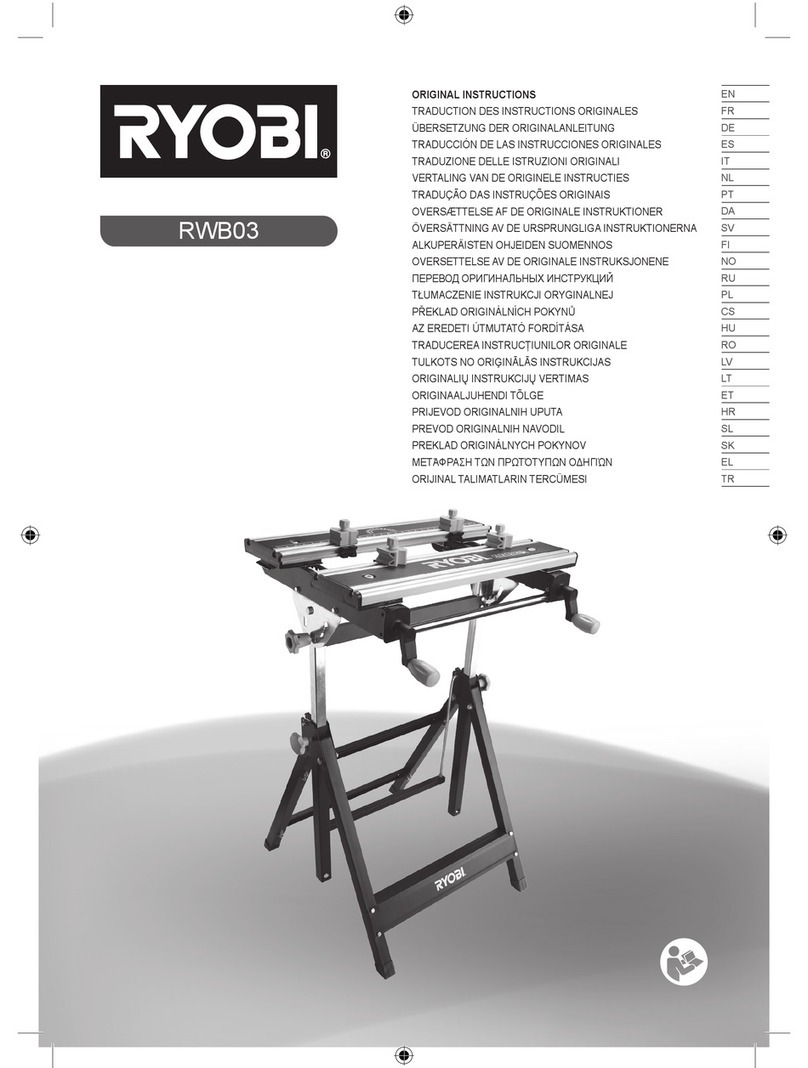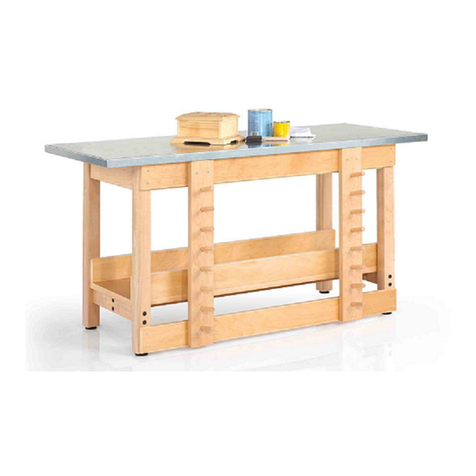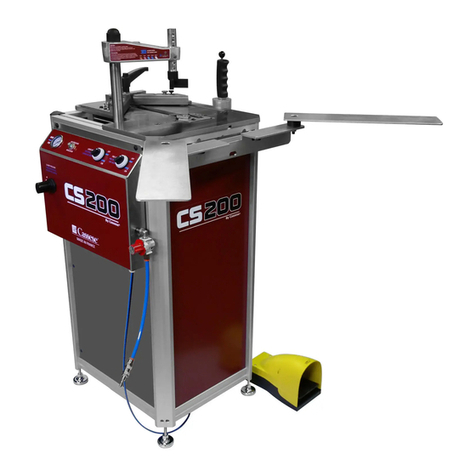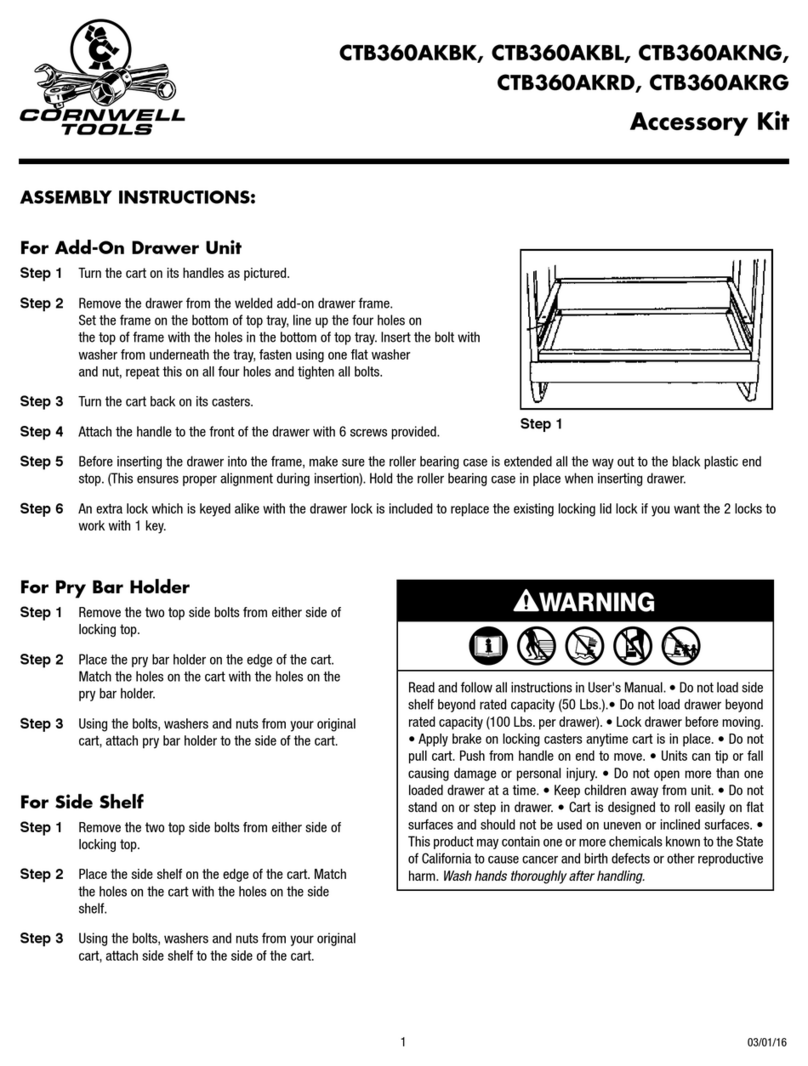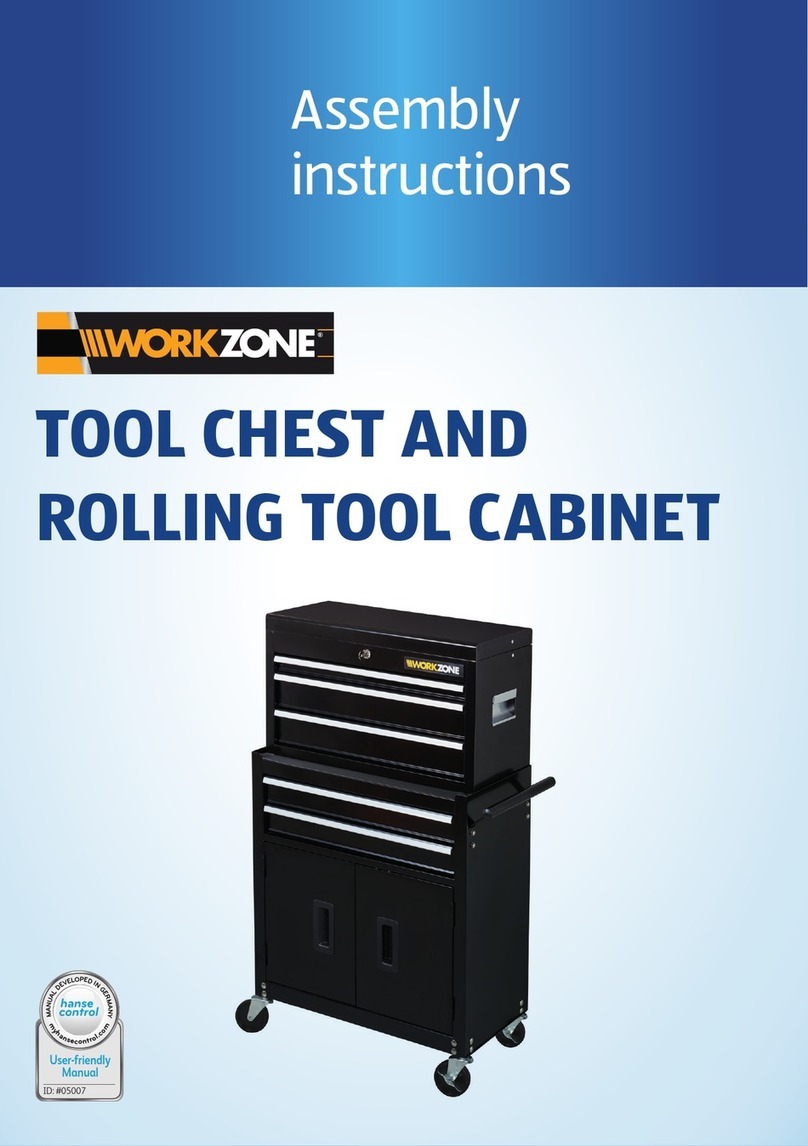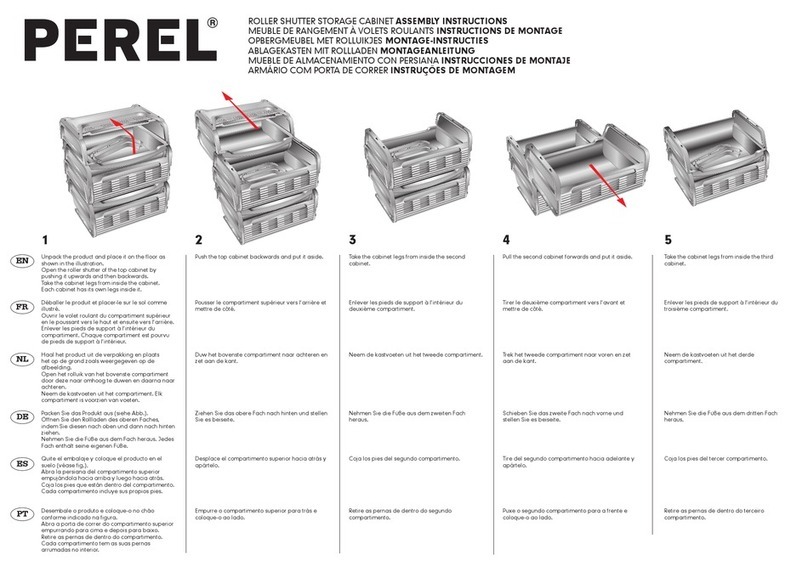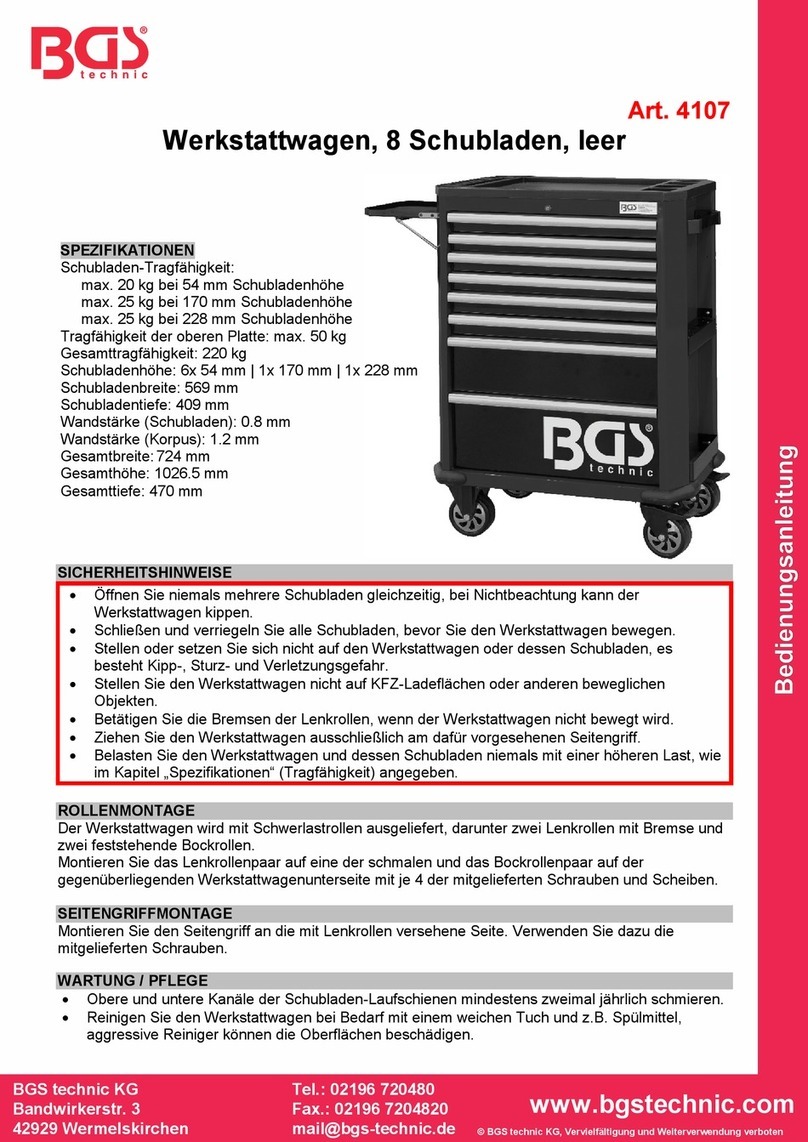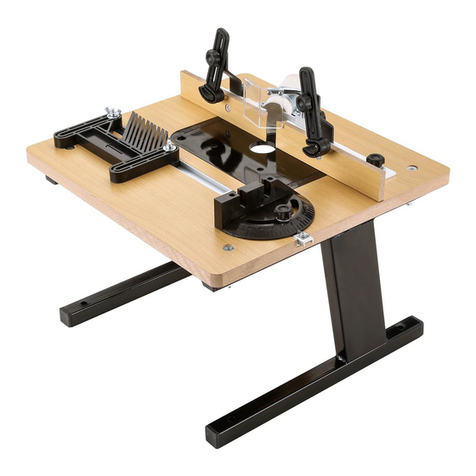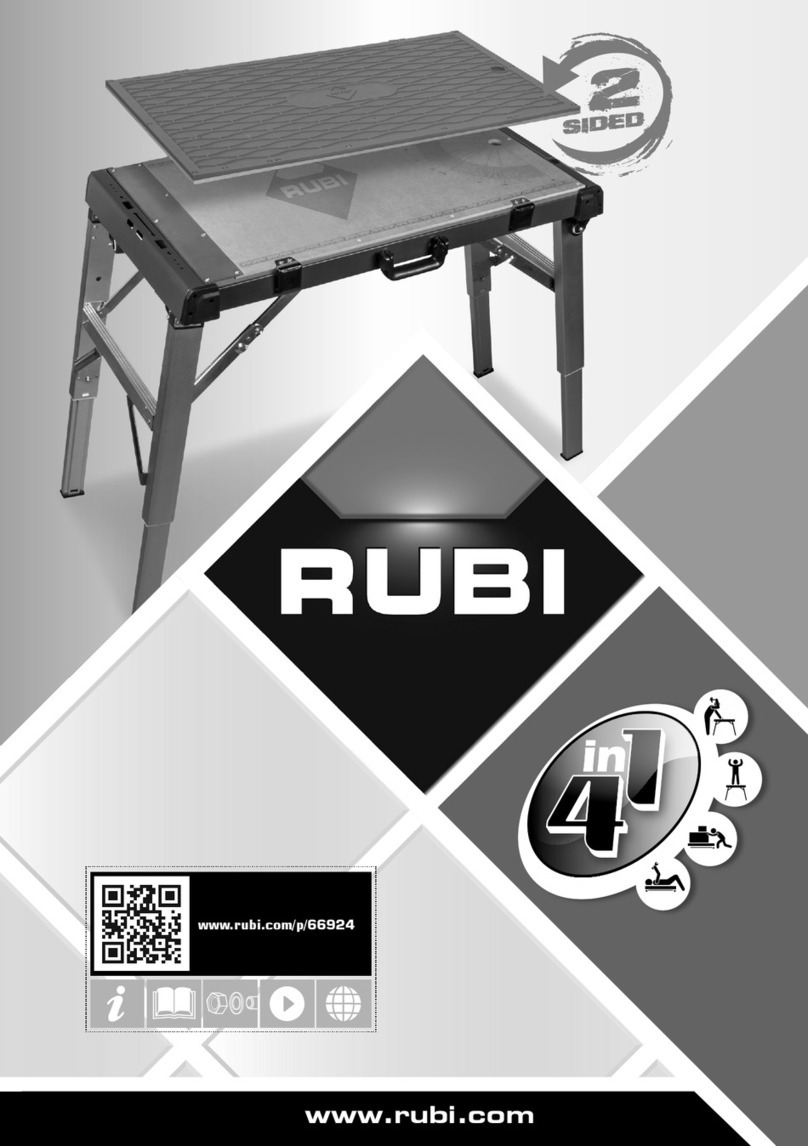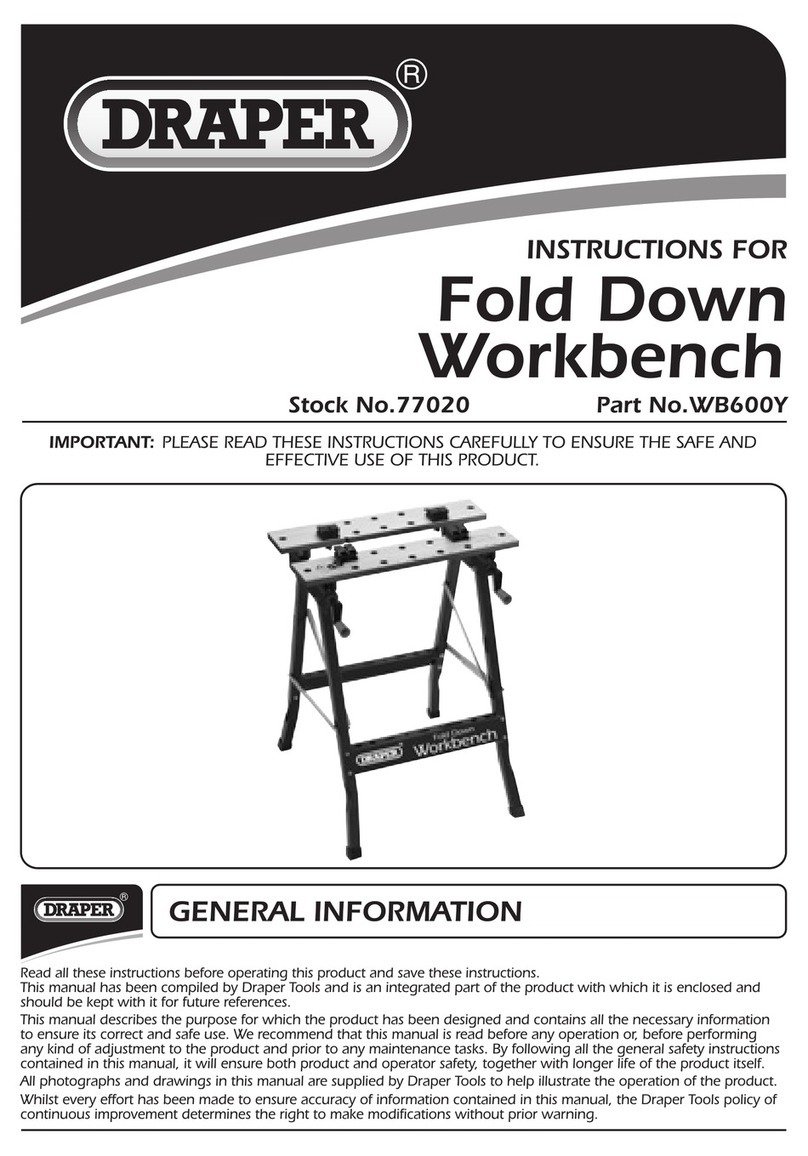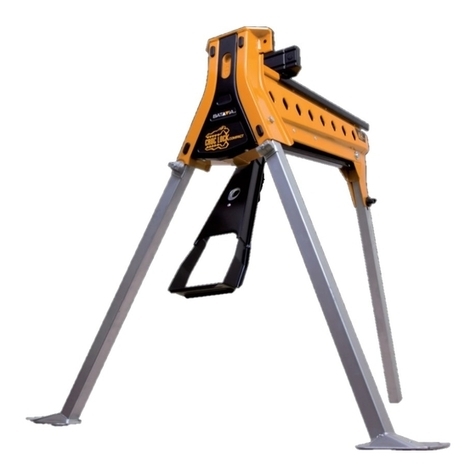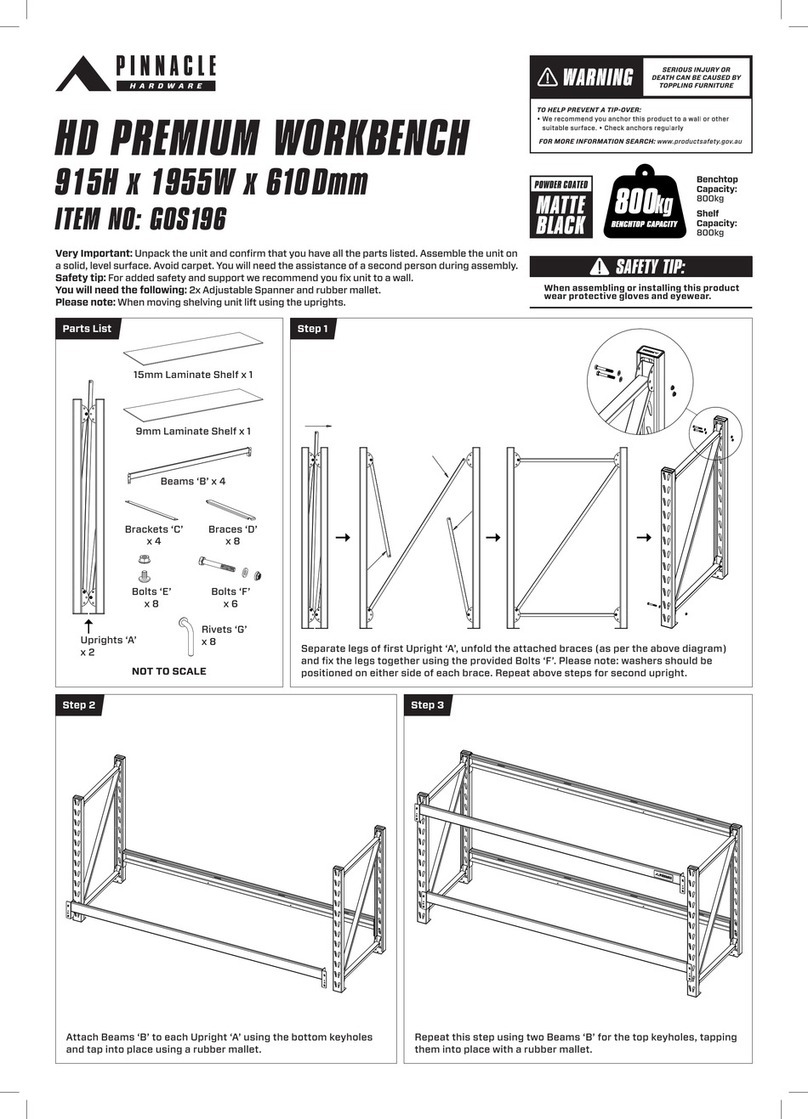Fig 4. Carefully lower the chainsaw bar into position
between the two solid blocks in the pivot clamp and
ensure a minimum 2 cm gap between the body of the
chainsaw and the clamp. Make sure that the bar is
approx. 90° to the clamp and well clear of the chain
before tightening the wheel clamp. Once tightened,
test the arc of travel to make sure that the chain bar
does not touch any part of
the saw bench.
Fig 5. Mount the hole in the guard on the bolt
protruding upwards from the clamp, loosely securing it
with the nut and washers. Now slide the guard
backwards or forwards as necessary to a position in
which the guard is well clear of the chain and then
tighten the nut. echeck for clearance.
The LOGMASTER is now ready for use.
Fig 4.
2 cm
pivot
clamp
Fig 5.
chain guard
THE PI OT CLAMP SHOULD
BE REGULARLY CHECKED
FOR TIGHTNESS!
• Place the wood on the log table pushing the end to the measuring rod. Hold the wood down
firmly with your left hand, keeping your hand well clear of the cutting edge of the chainsaw,
and arc the chainsaw down to cut.
• The log table on the Logmaster is designed for taking lengths to a maximum of 1.80 metres and
a maximum diameter of 25 cm. The maximum permissible load on the Logmaster is 120 kg.
• The Logmaster chain guard is designed for chainsaws with a cutting bar not longer than 45 cm.
A chainsaw with a cutting bar longer than 45 cm (which protrudes beyond the chain guard) is
not recommended.
• The pivot clamp and guard must be detached when using the chainsaw separately from the
Logmaster.
• The pivot clamp and support must be kept well lubricated.
• The Logmaster must be used on flat surfaces only.
• Ensure the nuts and bolts on the pivot clamp and guard are kept tight at all times.
• When using a chainsaw with the Logmaster it is essential that all safety codes and practices of
the chainsaw manufacturer and Health and Safety Executive are fully followed.
INSTRUCTION GUIDE FOR SAFE USE OF THE LOGMASTER


